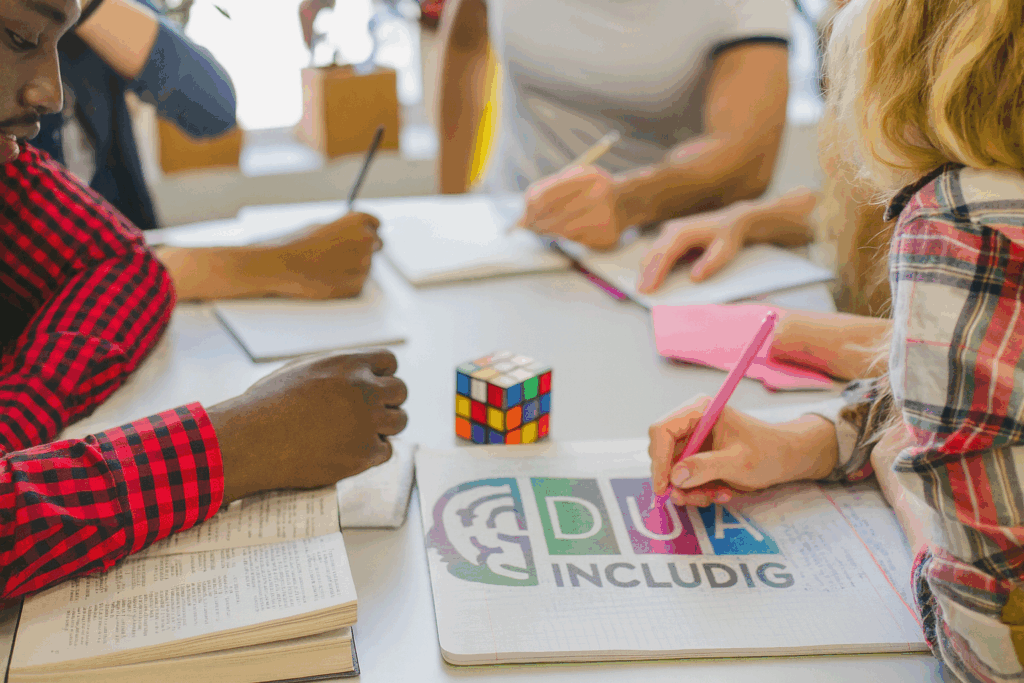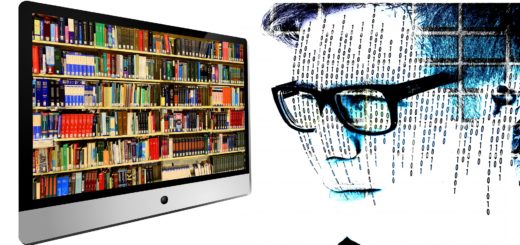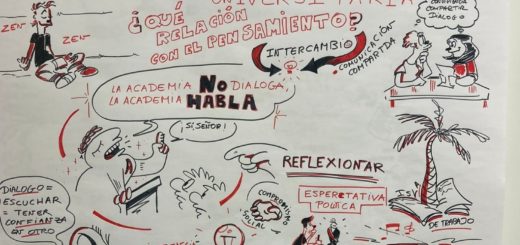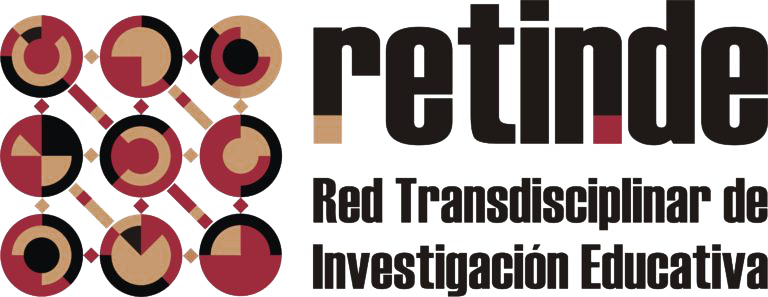UDL 3.0 as the core of curriculum alignment for quality education
In line with this premise, the DUAINCLUDIG R&D&I project investigated which conditions enable —and which barriers hinder— the application of UDL in the classroom and in school culture, launching teacher-training actions and curricular implementation that turned the framework into sustainable decisions. Among its results, the UDL Toolbox stands out, designed for direct transfer to planning and everyday classroom practice (https://duaincludig.es/caja-herramientas-dua-bienvenida); as well as a training-oriented MOOC hosted on Udemy, aimed at building capacity and kick-starting implementation in schools.
To place school resources and decisions in their proper context, it is helpful to briefly review the evolution of UDL and its most recent update. From its conception as a design model applied to architecture in 1997 to the present, the concept of UDL has been enriched by numerous authors, to the point that it now serves as the model on which to base any inclusive curricular proposal we wish to bring into our classrooms today.

Right now, talking about UDL places us at version 3.0 of the model. With the same core aim as the original —removing barriers to learning and teaching— this new version seeks to offer a more inclusive and accessible framework than ever, one that responds to today’s moment of educational change. The goal is not inclusive education per se; rather, inclusion is a prerequisite for approaching the true goal: quality education (Alba, 2022).
This update reinforces the idea of designing from the outset for variability, emphasizes students’ meaningful participation and self-regulation, and calls for coherence among school policies, practices, and professional culture. In doing so, UDL 3.0 guides a curriculum that ensures access, participation, and progress, and provides a common language to sustain it.
With this horizon in mind, the natural next step is to translate the UDL update into the curriculum itself. Implementing UDL in the school setting involves reviewing and adapting curricular elements so they align with the needs and characteristics of all students (Toapanta et al., 2025).
Structuring the curriculum in the service of inclusion requires comprehensive, competency-aligned curriculum planning that universalizes foundational knowledge, so all students have the tools to keep learning throughout life. This, in turn, calls for flexibility in time and space and for the creation of intentionally planned learning environments; in short, a pedagogical structure that ensures everyone’s presence, participation, and progress, removing any barriers that may arise (Castrillo-Álvarez et al., 2025).
UDL in learning objectives comes to life by framing them as observable, transferable performances; sharing success criteria from the outset; and planning diverse access routes without lowering the bar, while building in opportunities to plan, monitor, and review. For foundational knowledge, to universalize means anticipating predictable barriers —terminology, text density, single formats— and offering multiple, accessible representations. Summaries, outlines, visual or auditory supports, manipulatives, and digital resources compatible with assistive technologies to facilitate entry and deeper learning with scaffolds that can be faded. For competencies, the key is to link common, transparent criteria with varied evidence. The same competency can be demonstrated through an oral or written explanation, digital production, case analysis, or prototyping, while metacognition is developed through milestone-based planning and checklist.
In designing activities and learning situations, UDL proposes an accessible starting point for the whole group along with pathways for deepening, with clear prompts, model examples, and flexible timing. Participation is diversified through roles and informed choice of tools, while attending to cognitive load and the accessibility of physical and digital environments. In assessment, the same achievement criteria are upheld, and diverse forms of evidence are accepted to demonstrate them. Rubrics shared from the outset and brief, frequent feedback guide for improvement, while portfolios or iterative reviews make progress visible without being confused with grading.
Ultimately, UDL doesn’t add extra layers: it aligns objectives, knowledge, competencies, activities, and assessment to anticipate barriers from the outset. In this way, inclusion stops being a one-off adjustment and becomes a shared design criterion.
References
Alba Pastor, C. (Coord.) (2022). Enseñar pensando en todos los estudiantes: El modelo de diseño universal para el aprendizaje (DUA). SM.
Castrillo-Álvarez, D., Pérez-García, F., Zarrias-Ruiz, E., Sánchez-Guerola, D. & Arribillaga-Sagastibeltza, A. (2025). DUALIZA-TE: Diseño de entornos educativos y situaciones de aprendizaje en clave DUA. JONED. Journal of Neuroeducation, 6(1), 110-120. https://doi.org/10.1344/joned.v6i1.47566
Toapanta, R.C., Bastidas, E.A., Auquilla, M.M., & Tierra, J.E. (2025). Importancia de la aplicación del DUA como modelo didáctico en el desarrollo de los currículos de Educación General Básica. Revista Imaginario Social, 8(2), 95-106. https://doi.org/10.59155/is.v8i2.290

Authorship:
Inmaculada Pedraza-Navarro & Fátima Romera Hiniesta
Grupo de Investigación, Evaluación y Tecnología Educativa (GIETE)






